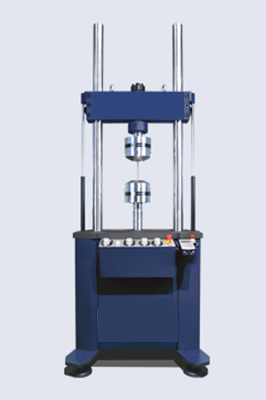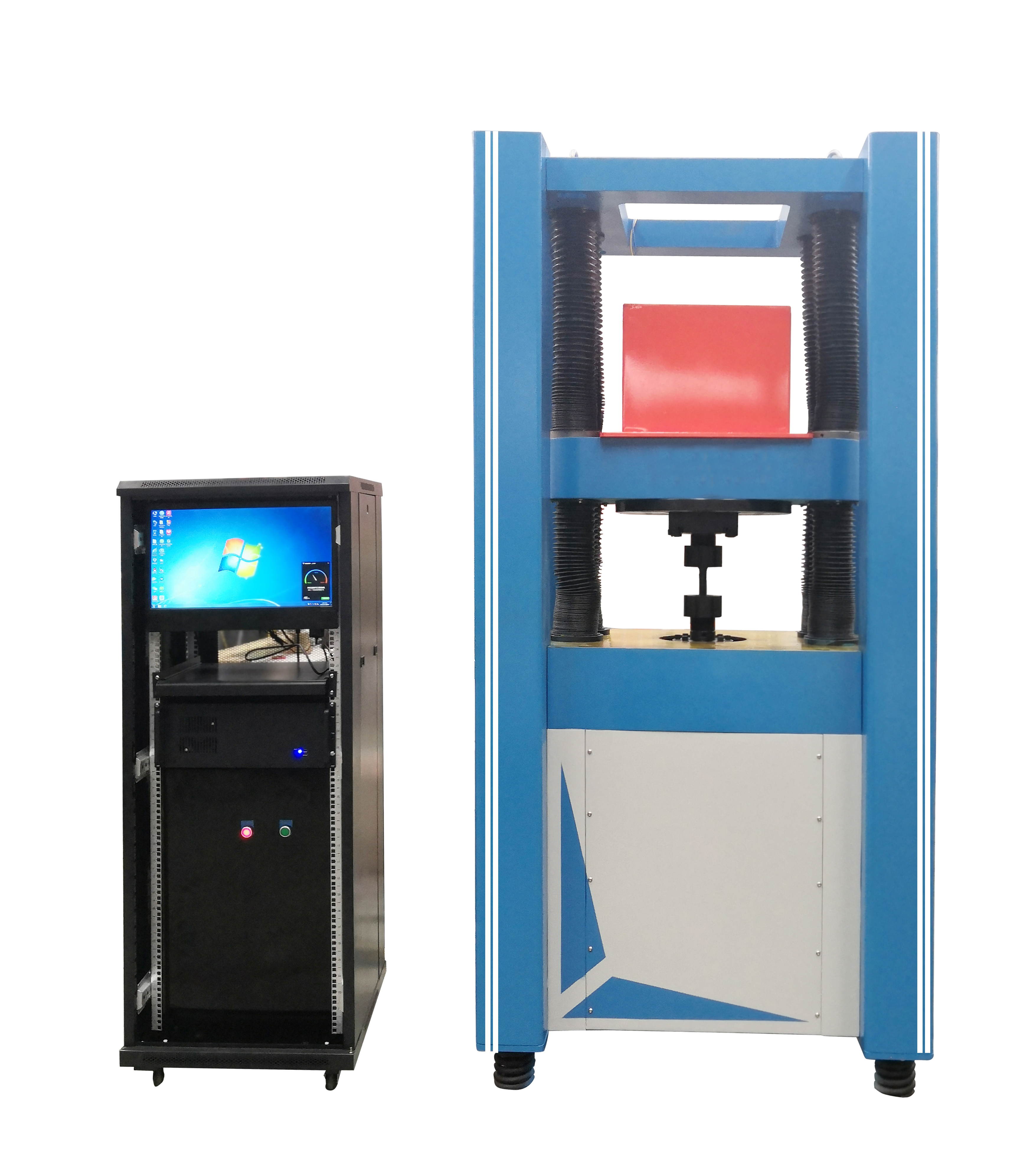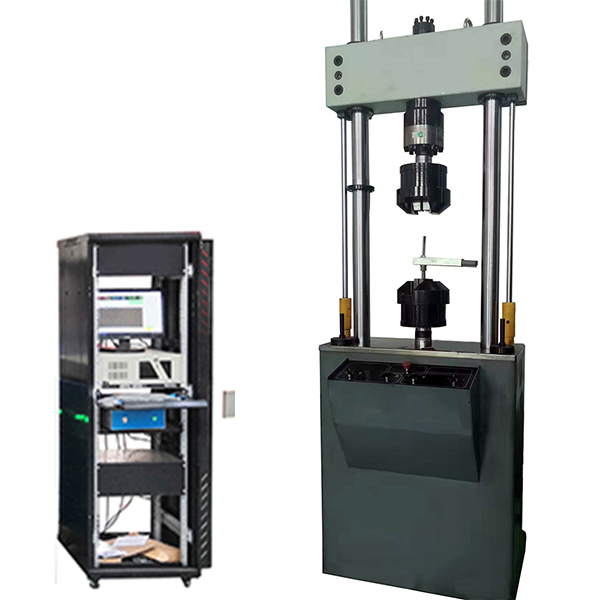What is the high frequency fatigue testing machine?
Brief introduction
The high frequency fatigue testing machine is used to determine the fatigue characteristics, fatigue life, prefabricated cracks and crack extension of metals, alloys and their components (such as operating joints, fastened parts, spiral movement parts, etc.) under alternating load in tension, compression or tension at room temperature.
Based on different applications, high-frequency fatigue testing machine can also be divided into electromagnetic type and motor type. The electromagnetic type high-frequency fatigue testing machine has relatively small dynamic displacement, but can provide a test frequency of up to 500Hz. The motorized high-frequency fatigue testing machine is less frequent than the electromagnetic type, but provides a larger displacement to meet the needs of structural parts testing.
When equipped with the corresponding test fixture, the high-frequency fatigue testing machine can perform three-point bending test, four-point bending test, thin plate tensile test, thick plate tensile test, reinforced steel bar tensile test, chain tensile test, fastener test, link test, torsion fatigue test, bending-torsion compound fatigue test, interactive bending fatigue test, CT test, CCT test, gear fatigue test under sinusoidal load.
In addition to the above uses, the high frequency fatigue testing machine , especially the motor type high frequency fatigue testing machine also has a wide range of applications in the field of fatigue testing of parts
The fatigue testing machine is divided into low frequency fatigue testing machine, medium frequency fatigue testing machine, high frequency fatigue testing machine, ultra-high frequency fatigue testing machine according to the frequency. The low frequency below 30Hz is called low frequency fatigue testing machine , 30-100Hz is called medium frequency fatigue testing machine , 100-300Hz is called high frequency fatigue testing machine . 300Hz or more is called ultra-high frequency fatigue testing machine. Mechanical and hydraulic type is generally low frequency, electromechanical drive for medium and low frequency, electromagnetic resonance type for high frequency, pneumatic and acoustic type for ultra-high frequency.
From the fatigue testing machine control unit system fatigue testing machine is divided into two main categories: the first category of linear sweeping frequency amplitude for the control unit system, the second category for PWM pulse modulation type control system. Control unit system mainly has: one is the linear sweep amplitude technology applied to the control system, the principle of this control technology is mainly the feedback of the load sensor combined with the principle of phase shift sweep to control the starting phase,; the second is the PWM pulse modulation technology applied to the control unit system.

Principle
According to the different driving methods and drive units of the fatigue testing machine, it can be divided into: electromagnetic drive type, electro-hydraulic servo type, pneumatic drive type, lever, centrifugal mechanism drive type, crank mechanism drive type and other forms of fatigue testing machine.
Among them, the electromagnetic force as the driving unit of the high-frequency fatigue testing machine works by using the resonance phenomenon of the system. The mechanical structure of the electromagnetic drive fatigue testing machine is composed of a frame, electromagnetic vibrator, vibration spring, load sensor, test piece and counterweight mass block to form the vibration system of the whole machine. The power unit has a vibration power source provided by the electromagnetic vibrator to provide excitation and form a vibration source. If the frequency phase value of the excitation force output from the electromagnetic vibrator is the same as the inherent frequency of the whole machine system, the whole vibration system resonates, then the counterweight mass object resonates on the whole machine, and the output inertia force acts reciprocally on the tested test piece, thus completing the fatigue test.
Electro-hydraulic servo type fatigue testing machine is a constant pressure servo hydraulic pump station as the power source to load the test piece. Pneumatic-driven fatigue testing machine use a constant pressure servo-pneumatic pump station as the power source to load the test piece. Lever, centrifugal mechanism-driven and crank mechanism-driven fatigue testing machine rely on the linear stroke of the mechanical structure to constitute the power source of the machine.
The fatigue testing machine is a machine mainly used to determine the fatigue performance and fatigue life of metals and their components at room temperature, complete with prefabricated cracks and crack expansion, and other fatigue tests. The specimen is subjected to fracture toughness test under the action of alternating load generated by the exciter, and the crack expansion rate of the metal material and the threshold value of the material is tested. When the vibration frequency of the excitation system is equal to the inherent frequency of the system itself, that is, the system resonates, the resulting small excitation force after amplification in the test piece can be carried out on the material fatigue test. Electro-hydraulic high frequency fatigue testing machine is widely used in the field of fatigue testing machine because of its advantages such as fast dynamic response and high output power.
Electro-hydraulic High Frequency Testing Machine
Fatigue testing machine is a machine mainly used to measure the fatigue performance and fatigue life of metals and their components at room temperature, and to complete fatigue tests such as prefabricated cracks and crack expansion. The specimen is subjected to fracture toughness test under the action of alternating load generated by the exciter, and the crack expansion rate of metal materials and the threshold value of the material is tested. When the vibration frequency of the excitation system is equal to the inherent frequency of the system itself, that is, the system resonates, the resulting small excitation force after amplification in the test piece can be carried out on the material fatigue test. Electro-hydraulic high-frequency fatigue testing machine is widely used in the field of fatigue testing machine because of its dynamic response, high output power and other advantages.
The exciter of the electro-hydraulic high frequency fatigue testing machine is installed in the base of the testing machine . By controlling the synchronized movement of the bilateral valve-controlled single-outlet rod, the height of the upper chuck is adjusted to accommodate the varying lengths of each fatigue test material. The 2D electro-hydraulic shaker is activated when the test material is fixed in the upper and lower chucks. 2D excitation valve continuously rotates to drive the electro-hydraulic shaker to achieve reciprocal vibration, thus driving the test specimen for fatigue testing. The frequency of excitation is proportional to the rotational speed of the 2D excitation valve. In order to measure the fatigue characteristics of the specimen under tensile stress, compressive stress and alternating tensile and compressive stresses, it is necessary to bias the excitation center balance position of the shaker to change the nature of the load force output from the electro-hydraulic shaker, and due to the rotating valve characteristics of the 2D excitation valve, it is not possible to incorporate a bias signal. .
By changing the opening size and direction of the digital servo valve, the shaker vibration center position can be biased, and the bias amount is proportional to the opening of the digital servo valve. When a test piece is required to be tested in tension or compression, it is only necessary to change the direction and size of the opening of the parallel digital valve to achieve the change in tensile and compressive stresses, and also to achieve the stress output of alternating tensile and compressive loads. The oil source used for the single outlet hydraulic cylinder and the electro-hydraulic exciter are independent of each other to avoid changes in beam height due to fluctuations in oil pressure. The control system of electro-hydraulic high frequency fatigue testing machine can be realized by adjusting the potentiometer to control the frequency, amplitude and vibration center offset of the electro-hydraulic exciter.
Ultra high frequency universal fatigue testing machine
Ultra high frequency universal fatigue testing machine is a new generation of testing machine developed by horizontester according to the requirements of domestic and foreign customers following the progress of world science and
technology. The equipment has the functions of electromagnetic high frequency fatigue testing machine, electronic universal
testing machine and vibration table.First of all, it has all the characteristics of electromagnetic high-frequency fatigue testing machine, but in structure, it adopts unique double four column high stiffness frame, built-in electromagnetic excitation
system, filled with non-metallic damping materials.The working frequency breaks through the traditional high-frequency limit of 300Hz and is expected to reach above 450Hz, which can save half of the working time. The stroke can meet the test requirements of large deformation specimen,chain and wire rope High frequency fatigue test can be carried out. Secondly,the function of electronic universal testing machine is added to the equipment. Without changing the structure, the working mode of electronic universal testing machine can be simply switched. Third, the equipment only needs to install one
accessory to switch to the shaking table working mode. Fourth, in terms of electrical control and software, it has absorbed the advantages of relevant machines at home and abroad, which makes it easy to use, easy to operate and powerful.

